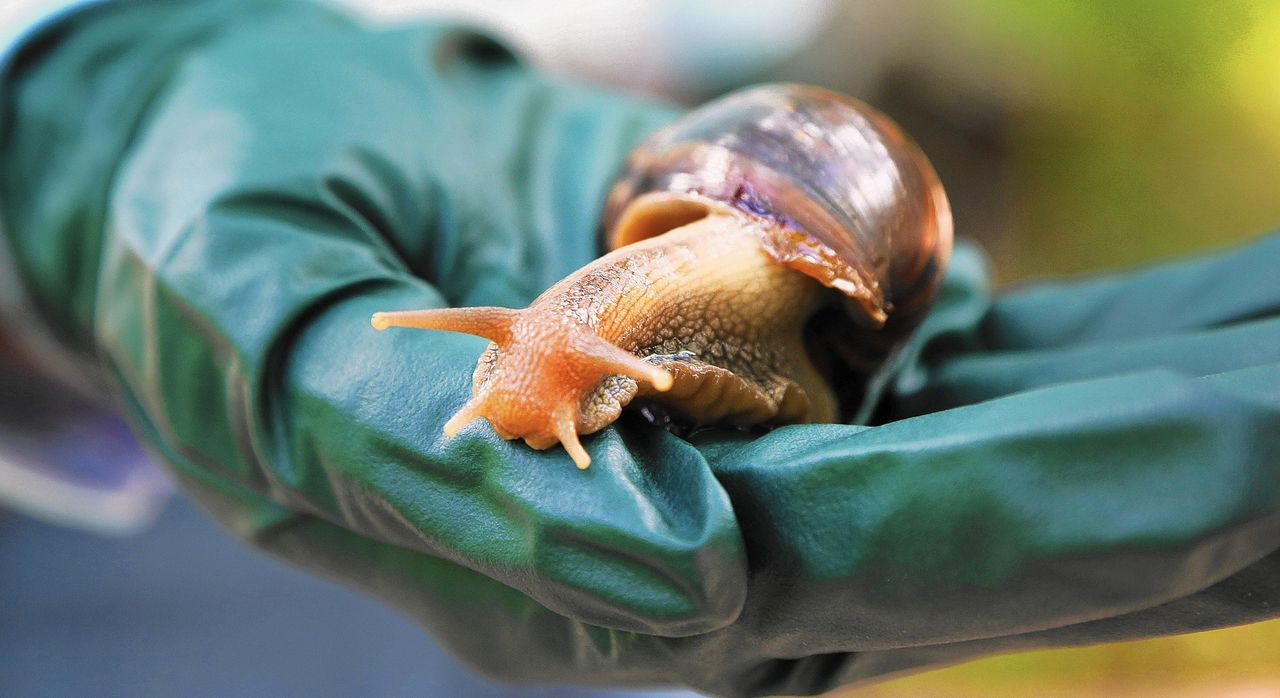âOne of the most damaging snails in the worldâ puts part of Florida city under quarantine
The giant African land snail, known by the state “as one of the most damaging snails in the world,” has shown up again in South Florida — this time in Miramar, where agriculture officials on Tuesday enacted a quarantine for part of the city.
The giant African land snail consumes “at least 500 different types of plants,” according to the Florida Department of Agriculture and Consumer Services. “These snails could be devastating to Florida agriculture and natural areas as they cause extensive damage to tropical and subtropical environments.”
On June 2, the agriculture department confirmed that the type of snail was in Miramar after receiving a tip through a helpline. And on Tuesday, the agriculture department’s Division of Plant Industry enacted the quarantine, which kicks off the treatment process to eradicate “this detrimental agricultural pest,” the department said.
The department will treat properties with metaldehyde-based molluscicide, known as “snail bait,” a treatment allowed for residential use, it said.
In Miramar, the quarantined area includes the intersection of Pembroke Road and South University Drive, which proceeds south down South University Drive to Northwest 215th Street, then east to Southwest 62nd Avenue. Under the quarantine, it’s illegal to move giant African land snails, as well as certain materials in the quarantine zone, including plants, soil, yard waste, debris, compost and building materials.
The snail also could pose a health risk because they carry a parasite called rat lungworm, known to cause meningitis in people, the agriculture department said. Giant African land snails are illegal to import or possess in the United States without a permit.
It’s not the first time the snail has been spotted in Florida. It has been eradicated several times before in the state. The first time it was spotted in Florida was in 1969, and it was eradicated in 1975. Another eradication of the snail happened in 2021 from a detection that came a decade earlier in Miami-Dade County. The snails also were found in June last year in Pasco County, in northern Florida.
The populations previously eradicated in South Florida, and the populations in Lee County, had dark brown shells with grayish-brown flesh, the state said. The snails detected in Pasco County have light to dark brown shells with milky white flesh.
©2023 South Florida Sun-Sentinel. Visit sun-sentinel.com. Distributed by Tribune Content Agency, LLC.
